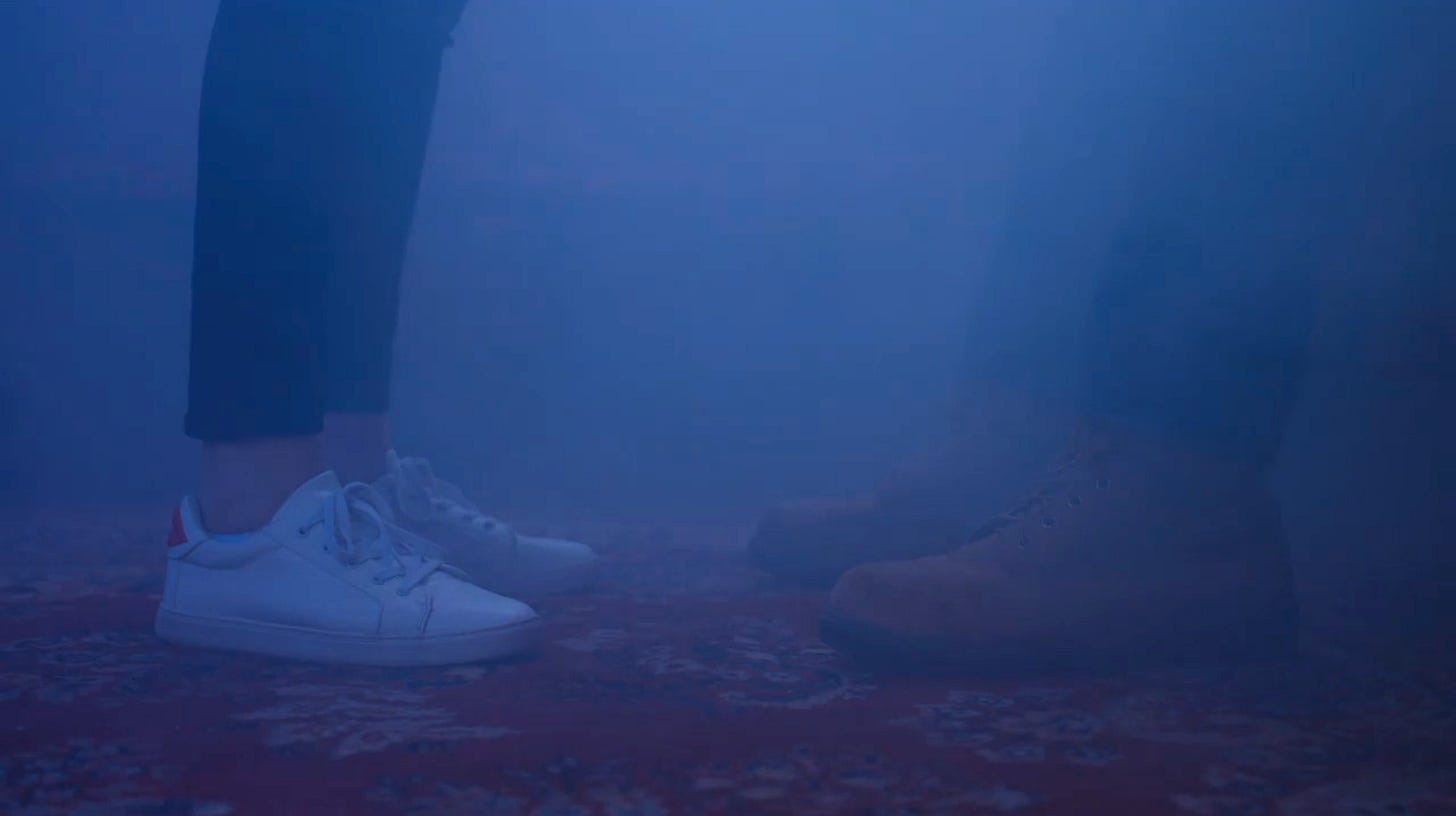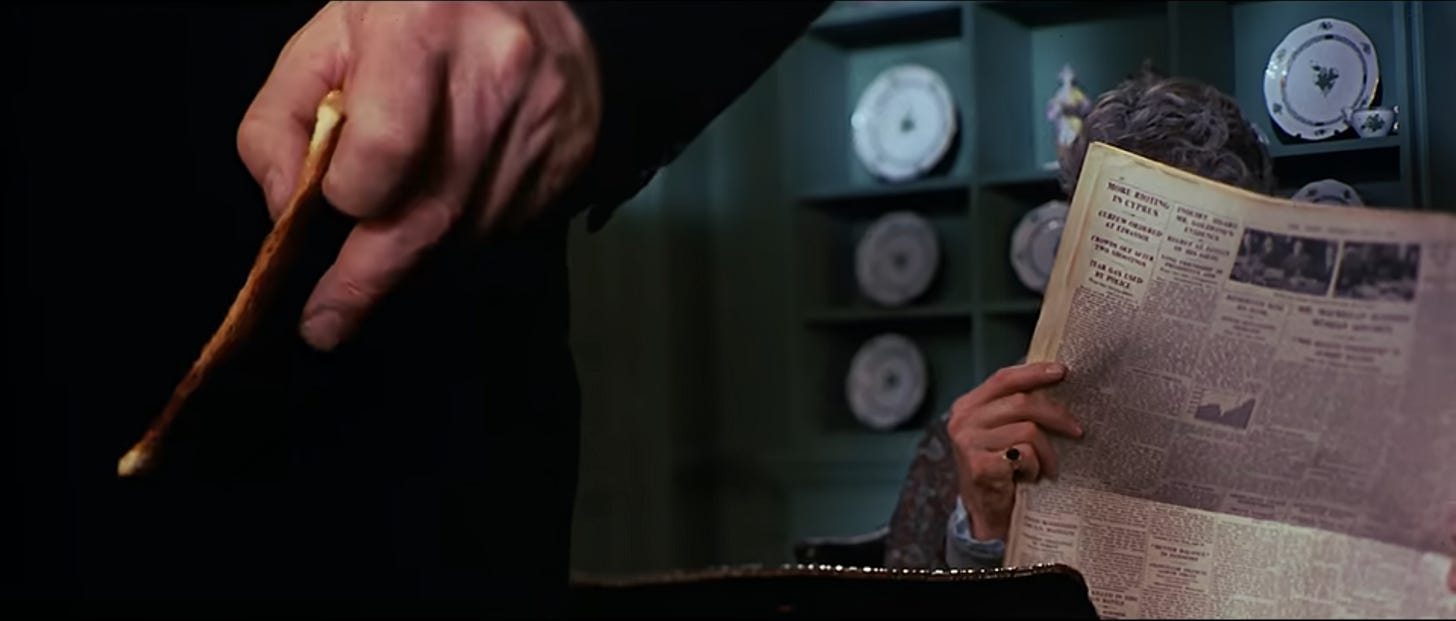Week 55 saw posts on Romeo Must Die (2000), Legends of Tomorrow (2016-2022), Letterkenny (2016-2023), The Remains of the Day (1993), and Barry Lyndon (1975).
Romeo Must Die
Third in our Romeo Must Die scene transitions is this 'simple' one; from a wide of Romeo driving away, to a closeup of a tea tray which cranes up into a wide.
Two key elements are
1. camera and object motions all continuing R-L
2. the contrast of almost every element, juxtaposing the two worlds.
We go from big black car, gray pavements, power cables, and engine noise to silver teapot, red brick garden full of flowers, teacups clinking, and birds chirping.
Visual storytelling in two moves.
Legends of Tomorrow
More superheroes than Captain America have punched Nazis - there's a strip where Superman fights through a room of Nazis to get to Hitler
and this Legends of Tomorrow scene pays it direct homage by using Brandon Routh's Atom to start the close-quarters fray after time-traveling to 1942.
Letterkenny
Letterkenny's style is straightforward locked-off shots of the person/people talking.
In episode 12.04 "Snooters" the gag is the haze machine in the Skids' after-hours club makes it impossible to see, so shots switch to similar setups but focus on feet, relying on shoe style to make clear who is who.


It's a 'simple' shot which both adheres to and plays with the house style, sticking to it all through the scene in typical Letterkenny commitment to the bit.
The Remains of the Day
This split diopter shot is in the opening minutes of The Remains of the Day - butler Stevens (FG L) is trying to hide that the toast is burnt, but Lewis (BG R) calls it out.
Why use a split here and not two shots, or a rack focus?
A split is a way of simultaneously showing us clearly Lewis can't see the toast, driving home how startling it is when he knows its exact status and what Stevens is trying to fix. Using this lens to get it all in one shot tells us Lewis not just smart, but perceptive of everything going on in his house.
Barry Lyndon
This shot from Barry Lyndon is meant to make us feel Barry's isolation even when he's surrounded by family and acquaintances. Rather than put Barry in a crowded room, it puts him in close quarters with his son and family dog.
As the shot pulls away, not only is Barry smaller and more isolated, but still; he's frozen, not interacting with his companions or the larger world.
Kubrick gets the emotional truth across with a camera movement, and we 'read' the story as the framing changes.





